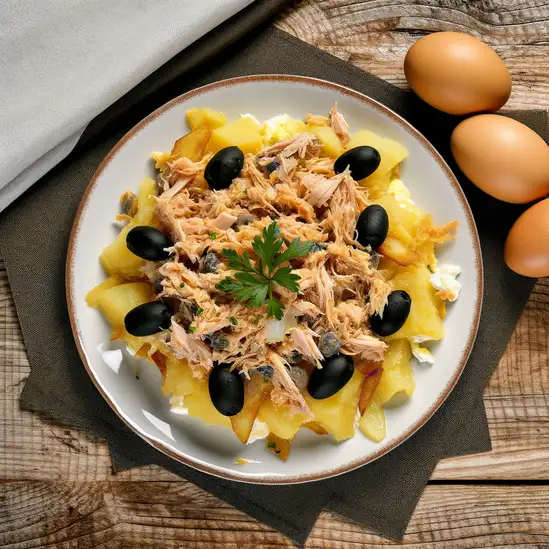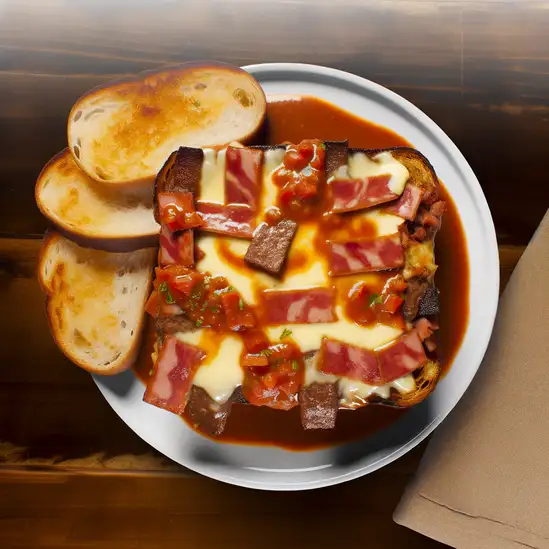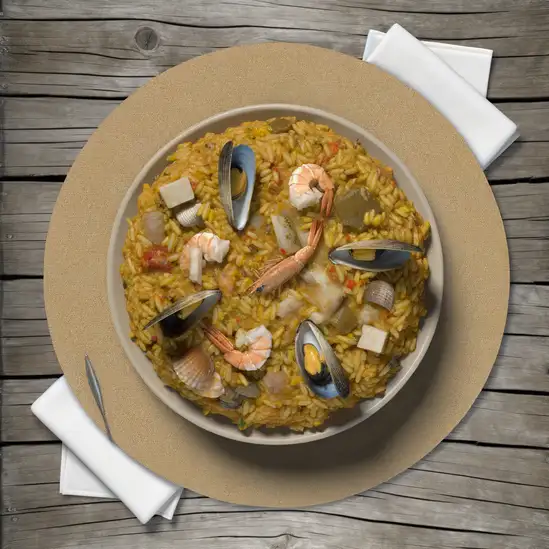



If you ever find yourself wandering through northern Portugal,Foz do Douro is the kind of place that wraps you in a gentle,salty breeze and makes you want to slow down just a little. It’s where the Douro River meets the Atlantic Ocean,and that meeting point gives the whole area this effortlessly cool,laid-back vibe. Imagine strolling along the waterfront promenade,the sound of waves mingling with distant laughter from cozy cafés,while the scent of fresh sea air and grilled sardines drifts around you. It’s a place that feels both timeless and alive,where locals and visitors alike savor the simple pleasures of life. The charm of Foz do Douro lies in its blend of old and new. You’ll find elegant villas with tiled facades standing shoulder to shoulder with trendy bars and artisan shops. The streets invite you to wander without a plan,discovering little bakeries where the smell of freshly baked pastel de nata pulls you in,or stopping at a terrace to sip a glass of vinho verde as the sun dips low,painting the sky in soft pinks and oranges. The rhythm here is unhurried,but there’s a quiet energy in the air,a sense that this is a place where stories unfold naturally. What really makes Foz do Douro special is how it balances nature and culture. You can spend your morning watching fishermen haul in their catch,then lose yourself in a small art gallery or a bookshop. The beaches are inviting but never overcrowded,perfect for a lazy afternoon swim or just feeling the warm sand between your toes. It’s a place that invites you to breathe deeply,savor every moment,and maybe,just maybe,fall a little in love with the simple beauty of coastal Portugal.
The information on this page is currently being reviewed by Tripkliq and should be used as a guide only
Eng word: Hello
Eng pronunciation: Oh-lah
Local language: Olá
Eng word: Goodbye
Eng pronunciation: Ah-deh-oosh
Local language: Adeus
Eng word: Thank you
Eng pronunciation: Oh-bree-gah-doo
Local language: Obrigado
Eng word: How much
Eng pronunciation: Kwahn-too koos-tah
Local language: Quanto custa
Eng word: Toilet
Eng pronunciation: Bahn-yay-roo
Local language: Banheiro
Eng word: Help me
Eng pronunciation: Ah-zhoo-dee mee
Local language: Ajude-me
Eng word: Yes
Eng pronunciation: Seem
Local language: Sim
Eng word: No
Eng pronunciation: Now
Local language: Não
Eng word: Excuse me
Eng pronunciation: Kohm lee-sen-sah
Local language: Com licença
Built in 1527, the Lighthouse of São Miguel-o-Anjo is one of the oldest lighthouses in Europe. It was constructed to guide ships safely into the Douro River and remains a significant maritime landmark.
The Fortress of São João da Foz, constructed in the 16th century, was built to protect the city of Porto from pirate attacks and invasions. It offers stunning views of the Atlantic Ocean and the Douro River.
Adjacent to the lighthouse, the Chapel of São Miguel-o-Anjo was built in the same period and is a fine example of early Renaissance architecture in Portugal.
The Foz do Douro Promenade is a beautiful coastal walkway that has been a popular spot for locals and tourists alike since the 19th century. It offers scenic views of the Atlantic Ocean and is lined with charming cafes and restaurants.
In the 18th century, British merchants settled in Foz do Douro, significantly influencing the local culture and economy, particularly through the port wine trade.
The historic Tram Line 1, which runs along the Douro River from Porto to Foz do Douro, has been in operation since the early 20th century. It offers a nostalgic journey through some of the most picturesque parts of the city.
Foz do Douro is renowned for its beautiful beaches, such as Praia dos Ingleses and Praia do Molhe. These beaches have been popular leisure spots since the 19th century.
The Foz Market, established in the early 20th century, is a vibrant place where locals buy fresh produce, fish, and other goods. It reflects the rich culinary traditions of the region.
The Church of Our Lady of Light, built in the 18th century, is a beautiful example of Baroque architecture. It is a significant religious site and a popular destination for visitors.
In Foz do Douro, the most common Power Adaptor is Type C, Type F.



A traditional dish made with shredded salted cod, onions, and thinly chopped fried potatoes, bound together with scrambled eggs and garnished with black olives and parsley.

Famous Portuguese custard tarts with a flaky pastry crust and a creamy, sweet filling, often enjoyed with a sprinkle of cinnamon.

A comforting green soup made with kale, potatoes, onions, and chorizo, often served as a starter in Portuguese meals.

A hearty sandwich made with layers of cured meats, sausage, and steak, topped with melted cheese and a rich tomato and beer sauce.

A seafood rice dish cooked with a variety of shellfish and fish, flavored with herbs and spices, often served in a rich broth.
Lisbon feels like a city that’s been gently kissed by the sun and the sea,where every street corner hums with life and stories. Imagine wandering through narrow,cobbled alleys lined with pastel-colored buildings,their azulejo tiles catching the light just right. The air carries a mix of salty ocean breeze and the rich aroma of freshly baked pastéis de nata—those flaky custard tarts you’ll find in every bakery. There’s a rhythm here,a kind of laid-back energy that invites you to slow down and soak it all in.
You’ll hear the soulful strains of fado music drifting from cozy taverns,a haunting soundtrack that feels like the city’s heartbeat. Locals chat animatedly over glasses of vinho verde or ginjinha,a cherry liqueur that’s as sweet as the conversations. The city’s hills offer stunning views where terracotta rooftops spill down toward the Tagus River,and the sunlight shimmers on the water like a thousand tiny mirrors.
Lisbon’s charm lies in its blend of old and new—ancient trams clatter past sleek street art,and centuries-old castles overlook buzzing markets filled with fresh seafood and vibrant produce. It’s a place where history and modern life dance together effortlessly,inviting you to explore,taste,and feel its unique pulse. Trust me,once you’ve wandered through its neighborhoods and tasted its flavors,Lisbon stays with you long after you leave.
Imagine stepping into a place where the ocean breeze carries the scent of blooming jacarandas and the distant hum of traditional Portuguese guitars fills the air—that’s Funchal for you. This city feels like a warm embrace,perched on the lush,rugged coastline of Madeira. Walking through its cobbled streets,you’ll notice vibrant markets bursting with fresh tropical fruits and the rich aroma of freshly baked bolo do caco bread. The colors here are alive:from the deep blue Atlantic stretching endlessly to the bright bougainvillea cascading down old stone walls.
Funchal’s charm lies in its blend of old-world grace and lively,modern spirit. Locals chat animatedly over glasses of Madeira wine in cozy tavernas,while street art peeks out from unexpected corners,telling stories of the island’s history and culture. The city pulses gently with a relaxed rhythm—you can feel it in the slow,deliberate pace of life and the genuine smiles of the people you meet.
Don’t miss the chance to ride the cable car up to Monte,where the views make your breath catch,or to wander through the botanical gardens,where exotic plants and butterflies create a quiet sanctuary. And when night falls,the harbor lights twinkle like stars,inviting you to savor fresh seafood paired with that sweet,fortified wine Madeira is famous for. Funchal isn’t just a destination; it’s a feeling you carry with you long after you leave.
Barcelona feels like a vibrant mosaic where every corner pulses with life and color. The moment you step onto its sun-drenched streets,you’re wrapped in a warm Mediterranean embrace—salt in the air,the distant hum of waves mingling with lively chatter from bustling cafés. The city’s energy is contagious,a blend of old-world charm and modern creativity that invites you to slow down and savor each moment.
Wandering through the narrow alleys of the Gothic Quarter,you’ll hear the soft clinking of glasses and the melodic strum of a street guitarist,while the scent of fresh-baked bread and roasting coffee drifts from cozy bakeries. Barcelona’s architecture is like a living art gallery—Gaudí’s whimsical buildings,with their undulating lines and vibrant mosaics,feel almost dreamlike against the bright blue sky. It’s a place where history and imagination dance together.
Food here is a celebration in itself. Imagine biting into a perfectly crispy,golden croqueta or savoring the rich,smoky flavors of a traditional paella,all washed down with a glass of chilled cava. The city’s markets,like La Boqueria,burst with colors and aromas—ripe tomatoes,fresh seafood,and fragrant herbs—that make you want to taste everything.
What makes Barcelona truly special is its spirit:a city that lives passionately,where locals and visitors alike gather to share stories,laughter,and the simple joy of being in a place that feels both timeless and alive. Trust me,once you’ve experienced it,you’ll carry a piece of Barcelona’s magic with you long after you leave.
If you ever find yourself dreaming of a place where the ocean breeze carries the scent of salt and blooming hydrangeas,Ponta Delgada is that kind of spot. It’s the lively heart of São Miguel Island in the Azores,and the moment you step into its cobbled streets,you feel this warm,welcoming pulse—like the city itself is breathing with you. The colorful buildings,with their intricate stonework and bright shutters,seem to tell stories of centuries past,while locals chat animatedly over coffee in cozy cafés that spill out onto sun-dappled squares.
Walking along the marina,you’ll hear the gentle slap of waves against boats and the distant call of seagulls,mingling with the laughter of children playing nearby. The air is fresh,tinged with the promise of adventure,whether you’re about to explore volcanic craters or dive into a plate of freshly caught seafood. Speaking of food,don’t miss trying the local cozido—a stew slow-cooked underground by volcanic heat,rich with flavors that feel like a warm hug on a cool day.
What really makes Ponta Delgada special is its blend of old-world charm and vibrant island life. There’s a relaxed rhythm here,where time slows just enough for you to savor a glass of local wine while watching the sun dip behind the hills. It’s a place that invites you to linger,to explore,and to fall a little in love with the simple,beautiful moments that make travel unforgettable.
If you ever find yourself wandering through the heart of Castilla-La Mancha,Sevilleja de la Jara is one of those places that quietly pulls you in with its unhurried rhythm and genuine warmth. The moment you step into its sun-dappled streets,there’s a comforting stillness,broken only by the soft chatter of locals and the occasional clink of glasses from a nearby terrace. It’s the kind of town where time seems to slow,inviting you to breathe in the scent of wild herbs carried on the breeze and the earthy aroma of freshly tilled fields surrounding the village.
The character of Sevilleja de la Jara is deeply tied to its landscape—rolling hills dotted with olive trees and cork oaks,and the distant silhouette of the Montes de Toledo. You’ll hear the gentle rustle of leaves and the melodic call of birds,a soundtrack that feels like a secret shared between nature and the village. The people here have a quiet pride in their traditions,and you can taste it in the hearty,rustic dishes served at local taverns—think slow-cooked stews bursting with local flavors and homemade bread still warm from the oven.
What makes Sevilleja de la Jara truly special is its blend of simplicity and soul. It’s not about flashy sights but about soaking in the genuine atmosphere,sharing a laugh with a friendly face,and feeling connected to a place that holds stories in every stone and smile. If you want a break from the usual tourist trails,this is where you’ll find a slice of authentic Spain that lingers long after you’ve left.
Imagine stepping into a place where every corner whispers stories of centuries past,yet pulses with a lively,modern heartbeat—that’s Valletta. The moment you wander through its narrow limestone streets,you’re wrapped in a warm embrace of history and life. The golden sunlight bounces off the honey-colored buildings,casting a glow that feels almost magical. You’ll hear the soft chatter of locals mingling in cozy cafés,the distant clink of glasses from bustling wine bars,and the gentle lapping of the Mediterranean against the harbor walls. It’s a city that invites you to slow down and savor the moment.
Valletta’s charm lies in its blend of grand and intimate. You can explore majestic Baroque churches and fortresses that stand proudly against the sky,then duck into a tiny bakery to inhale the sweet scent of freshly baked pastizzi. The air carries hints of sea salt mixed with the aroma of rich espresso and blooming bougainvillea. At sunset,the city transforms as the warm light softens the stone,and the streets fill with the hum of evening life—friends sharing plates of local cheese,olives,and sun-ripened tomatoes,paired with robust Maltese wine.
What makes Valletta truly special is its spirit—a resilient,welcoming energy shaped by its history as a crossroads of cultures. It’s a place where art,music,and tradition mingle effortlessly,inviting you to not just visit,but to feel connected. Trust me,once you’ve strolled its streets and tasted its flavors,Valletta stays with you long after you leave.
Scammers may install skimming devices on ATMs to steal card information from unsuspecting tourists.
Scammers may approach tourists asking for donations to fake charities or causes, often using emotional appeals.
Tourists exchanging money may be given incorrect rates or counterfeit currency by dishonest exchange services.
Tourists may encounter unlicensed taxi drivers who overcharge or take unnecessarily long routes to inflate fares.
Unlicensed individuals may pose as tour guides, offering overpriced or misleading tours with little value.
Some establishments may inflate prices or add hidden fees to bills when they identify customers as tourists.
Crowded areas, such as beaches or restaurants, are hotspots for pickpockets targeting tourists' wallets, phones, and other valuables.
Vendors may sell counterfeit goods or charge exorbitant prices for low-quality items, especially in tourist-heavy areas.
Portugal has decriminalized the possession of small amounts of drugs for personal use, including cannabis. However, this does not mean drugs are legal. Possession of small amounts may result in a fine or referral to a treatment program rather than criminal charges. Trafficking and possession of larger quantities are still illegal and can result in severe penalties. Tourists should exercise caution and be aware of the legal distinctions.
In Foz do Douro, as in the rest of Portugal, smoking is prohibited in enclosed public spaces, workplaces, public transport, and certain outdoor areas such as playgrounds and sports facilities. There are designated smoking areas in some public places, but it is important to look for signs indicating where smoking is allowed. Violations can result in fines.
Vaping is subject to similar regulations as smoking in Portugal. It is prohibited in enclosed public spaces, workplaces, public transport, and certain outdoor areas. Designated vaping areas may be available in some locations. Tourists should be mindful of local signage and regulations to avoid fines.
What are other people saying about Foz do Douro?
Recent Social posts about Foz do Douro
There is nothing to show you for now.